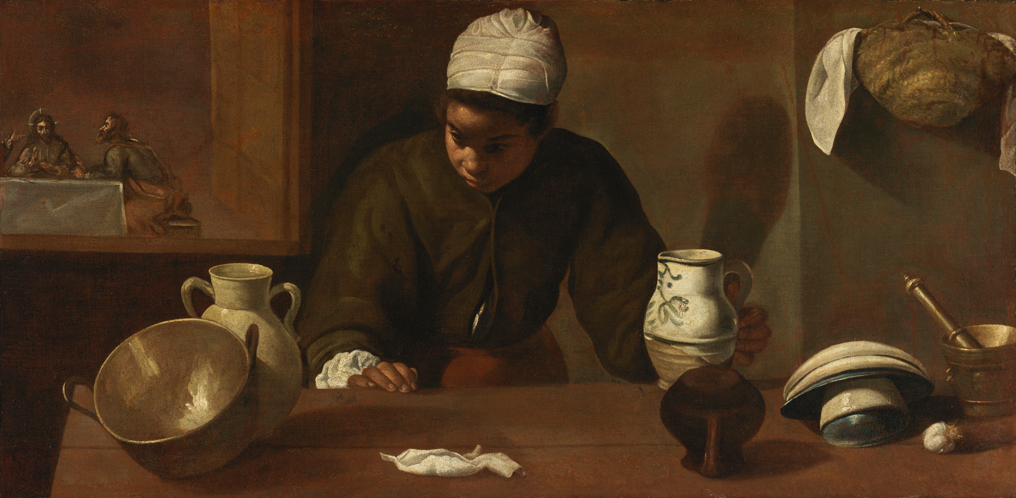Mulata, Morisco, African Slave?
Thoughts on an Elusive Protagonist in a Painting by Velázquez
Identifier (Artikel)
Abstract
When he was still very young, Diego Velázquez painted “Kitchen Maid with the Supper at Emmaus” (National Gallery of Ireland, Dublin). From its first appearance in scholarly literature, the topic of the picture and the identity of the protagonist have been disputed and the painting has engendered a wide variety of interpretations. This article takes the shifting terms used to define, name, and categorize the painting’s protagonist as its starting point. It re-examines the painting’s multiple ambiguities and argues that the painter might have deliberately veiled the protagonist’s identity, refusing semantic transparency – just as he has left the condition of the central figure’s very seeing unclear. This interpretation gains some plausibility when we observe the work against the background of the expulsion of Spain’s Morisco population between 1609 and 1614. The topic of absence, which the different empty pots and vessels emphasize, and the instabilities upon which Velázquez seems to emphatically insist allow an attempt to interrogate this painting through the lens of the complex identity politics surrounding the literary as well as real-life figure of the Morisco.
Statistiken


Lizenz

Dieses Werk steht unter der Lizenz Creative Commons Namensnennung - Nicht-kommerziell - Keine Bearbeitungen 4.0 International.


